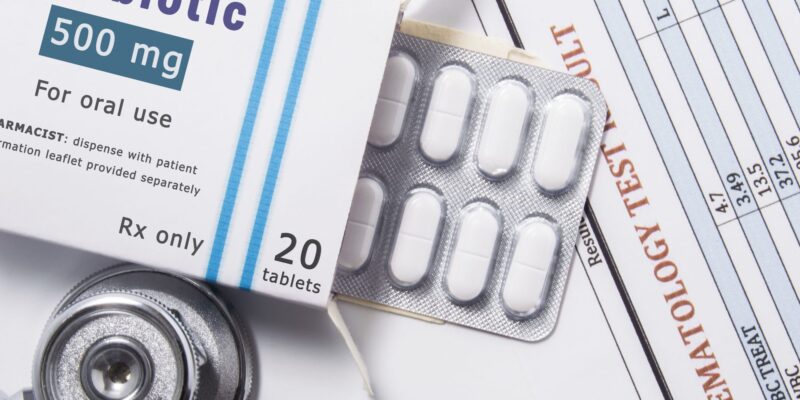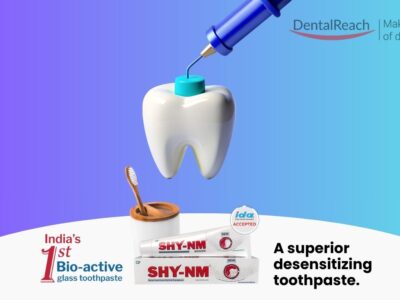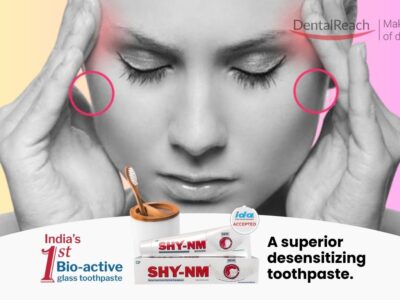The American Dental Association (ADA) has recently updated guidelines for patients who require antibiotic coverage prior to certain dental treatment.
Compared with previous recommendations, there are currently relatively few patient subpopulations for whom antibiotic prophylaxis may be indicated prior to certain dental procedures. This is based on a review of scientific evidence, which showed that the risk of adverse reactions to antibiotics generally outweighs the benefits of prophylaxis for many patients who would have been considered eligible for prophylaxis in previous versions of the guidelines. Concern about the development of drug-resistant bacteria also was a factor.
Key points in the updated ADA antibiotic stewardship recommendations:
- In general, for patients with prosthetic joint implants, prophylactic antibiotics are not recommended prior to dental procedures to prevent prosthetic joint infection.
- For infective endocarditis prophylaxis, American Heart Association guidelines (updated in 2021) support premedication for a relatively small subset of patients i.e only indicated for patients at the highest risk of infective endocarditis.

- For patients with these underlying cardiac conditions, prophylaxis is recommended for all dental procedures that involve manipulation of gingival tissue or the periapical region of teeth or perforation of the oral mucosa.
- With the exception of the AHA/ACC guidelines regarding prevention of infective endocarditis, there is no general guidance or recommendation to provide antibiotics as a prophylactic measure prior to dental procedures except for specific individuals with extenuating circumstances, where the determination and prescription are made by the patient’s surgeon or other treating physician.
Pediatric Patients:
- Cyanotic congenital heart disease (birth defects with oxygen levels lower than normal), that has not been fully repaired, including children who have had surgical shunts and conduits.
- A congenital heart defect that’s been completely repaired with prosthetic material or a device for the first six months after the repair procedure.
- Repaired congenital heart disease with residual defects, such as persisting leaks or abnormal flow at or adjacent to a prosthetic patch or prosthetic device.
Additional Considerations About Infective Endocarditis Antibiotic Prophylaxis (When Indicated):
- Clindamycin is no longer preferred as an oral or parenteral alternative to amoxicillin or ampicillin in individuals with allergies. Instead, cephalexin (or other first- or second-generation cephalosporins), azithromycin, clarithromycin, or doxycycline be used as alternatives for patients who can take oral antibiotics. Cefazolin or ceftriaxone can be used otherwise.
- If the dosage of antibiotic is inadvertently not administered before the procedure, the dosage may be administered up to 2 hours after the procedure.
- If patients require prophylaxis but are already taking antibiotics for another condition, select an antibiotic from a different class than the one the patient is already taking.
Additionally, the ADA developed guidelines for the management of dental pain and intra-oral swelling that largely recommended against the use of antibiotics for the treatment of infections without systemic involvement, favoring dental intervention in immunocompetent patients.
Source: ada.org
FAQs
What are the ADA antibiotic guidelines?
The ADA antibiotic guidelines provide recommendations for the appropriate use of antibiotics in dental procedures to prevent infections, including infective endocarditis, in patients who are at risk.
Are there specific ADA antibiotic guidelines for 2021 or 2022?
Yes, there are specific ADA antibiotic guidelines for each year. The ADA updates its guidelines periodically to reflect new research and changes in clinical practice.
What are the ADA antibiotic recommendations?
The ADA antibiotic recommendations provide guidance on the use of antibiotics in dental procedures to prevent infections in patients who are at risk. These recommendations are based on current scientific evidence and clinical experience.
Why is clindamycin no longer recommended by the ADA?
Clindamycin is no longer recommended by the ADA for routine prophylaxis due to concerns about the development of antibiotic-resistant bacteria. Other antibiotics, such as amoxicillin, are now recommended as the first-line prophylactic antibiotic.
What is ADA antibiotic prophylaxis?
ADA antibiotic prophylaxis refers to the use of antibiotics to prevent infections in patients who are at risk during dental procedures. The ADA provides guidelines for the appropriate use of antibiotics in these situations.
What are the ADA guidelines for antibiotic prophylaxis?
The ADA guidelines for antibiotic prophylaxis provide recommendations for the appropriate use of antibiotics in dental procedures to prevent infections in patients who are at risk. These guidelines are based on scientific evidence and clinical experience.
What are the ADA guidelines for premedication?
The ADA guidelines for premedication provide recommendations for the use of antibiotics prior to dental procedures in patients who are at risk. These guidelines are intended to prevent infections such as infective endocarditis.
What are the ADA guidelines for prophylactic antibiotics?
The ADA guidelines for prophylactic antibiotics provide recommendations for the use of antibiotics to prevent infections in patients who are at risk during dental procedures. These guidelines are based on scientific evidence and clinical experience.




















Comments